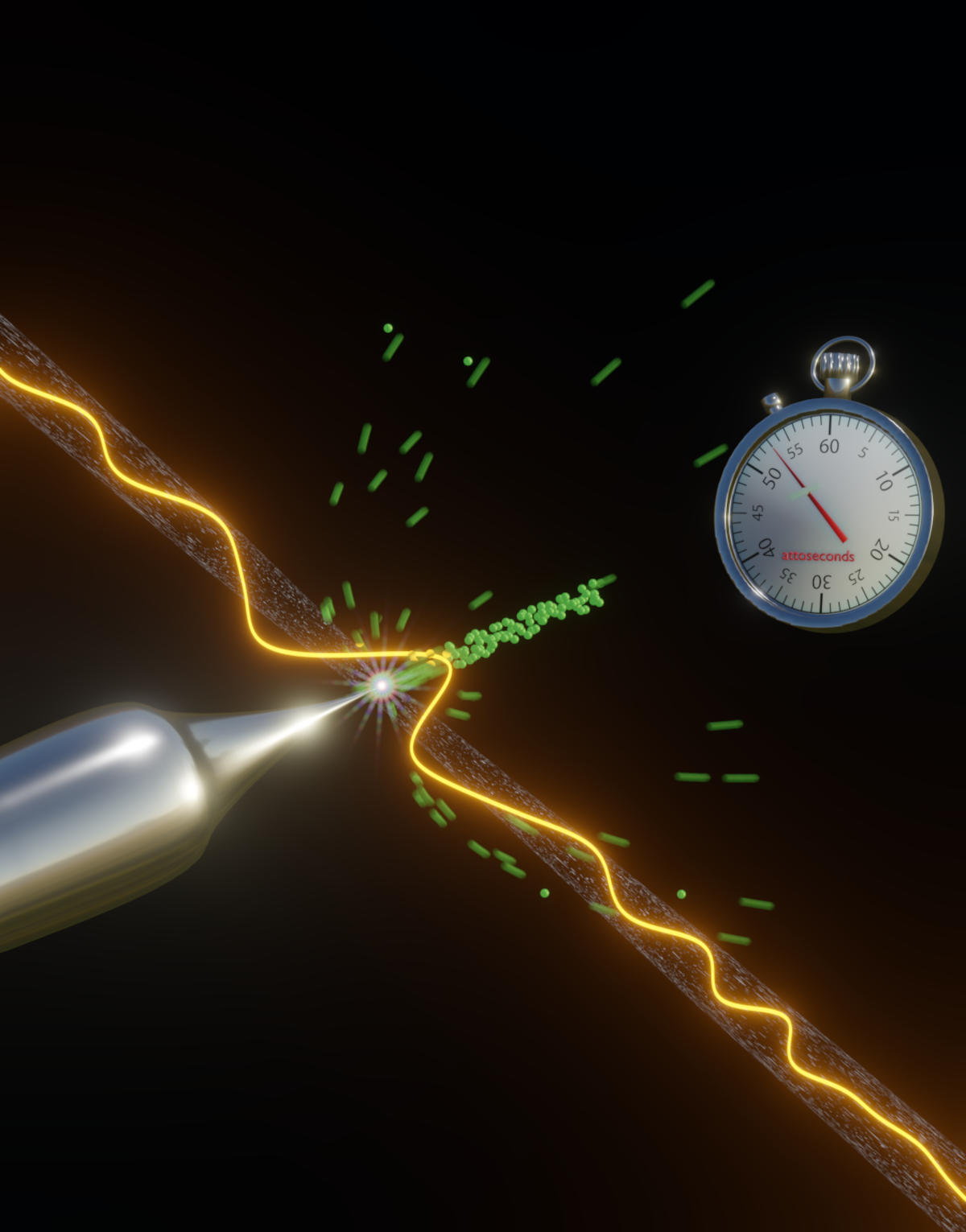
Gentle pulses emit electron bursts from a metallic nanotip that final simply 53 attoseconds. Credit: Eleftherios Goulielmakis/University of Rostock
Have you at any time wondered why your laptop or computer and other digital units often execute speedily and other occasions slowly but surely? It all boils down to the pace at which electrons, the smallest particles in our microcosm, flow out from the little potential customers in just the transistors of electronic microchips and build pulses. Developing methods to raise this speed is critical for pushing electronics and their programs to their most effectiveness probable.
But what is the shortest time doable for electrons to stream from a small steel guide in an digital circuit?
By making use of serious small laser flashes, a group of scientists led by Professor Eleftherios Goulielmakis, head of the group Serious Photonics of the institute for Physics at the College of Rostock, and collaborators at the Max Planck Institute of Reliable Point out Investigation in Stuttgart used state-of-the-art laser pulses to eject electrons from a tungsten nanotip and to make the shortest electron burst to date. The results were being a short while ago revealed in the journal Nature.
While it has lengthy been recognized that light can launch electrons from metals—Einstein was the very first to demonstrate how—the process is exceptionally hard to manipulate. The electric field of mild adjustments its path about a million billion times per second generating it hard to regulate the way it rips off electrons from the surface area of metals.
To conquer this challenge, the Rostock experts and their co-workers used a modern technologies that was before developed in their group—light field synthesis—which allowed them to shorten a gentle flash to fewer than a whole swing of its personal area. In switch, they used these flashes to illuminate the tip of a tungsten needle to knock electrons no cost into a vacuum.
“Using light-weight pulses that comprise basically a single cycle of its subject, it is now doable to give electrons a precisely controlled kick to set them cost-free from the tungsten suggestion in just a very limited time interval,” explains Eleftherios Goulielmakis, head of the study team.
But the challenge could not be get over except the experts also found a way to measure the brevity of these electron bursts. To offer with this hurdle, the crew made a new style of digicam that can get snapshots of the electrons during the limited time the laser is pushing them out from the nanotip and into the vacuum.
”The trick was to use a next, pretty weak, light-weight flash,” reported Dr. Hee-Yong Kim, the major writer of the new research. “This next laser flash can gently perturb the electricity of the electron burst to obtain out how it appears like in time,” he provides. “It is like the activity ‘What’s in the box?’ the place players try out to discover an object with no searching at it. but just by turning it about to really feel its form with their arms,” he carries on.
But how could this know-how be made use of in electronics? “As technological innovation developments speedily, it is realistic to count on the growth of microscopic digital circuits in which electrons journey in a vacuum room amid closely packed qualified prospects to reduce obstructions that slow them down”, states Goulielmakis. “Using light-weight to eject electrons and drive them amongst these potential customers could pace up long run electronics by many thousand situations today’s performance”, he more points out.
But the scientists consider that their freshly produced methodology will be applied instantly for scientific reasons. “Ejecting electrons from a metal within a portion of a light’s area cycle dramatically simplifies the experiments and lets us to use advanced theoretical procedures to recognize the emission of electrons in methods that had been not formerly feasible,” suggests Professor Thomas Fennel, a coauthor in the new publication.
“Since our electron bursts offer excellent resolution for taking snapshots of digital and atomic motions in resources, we system to use them to get a deep comprehending of complicated elements to aid their purposes in engineering,” Goulielmakis concludes.
Reference: “Attosecond field emission” by H. Y. Kim, M. Garg, S. Mandal, L. Seiffert, T. Fennel, and E. Goulielmakis, 25 January 2023, Mother nature.
DOI: 10.1038/s41586-022-05577-1




